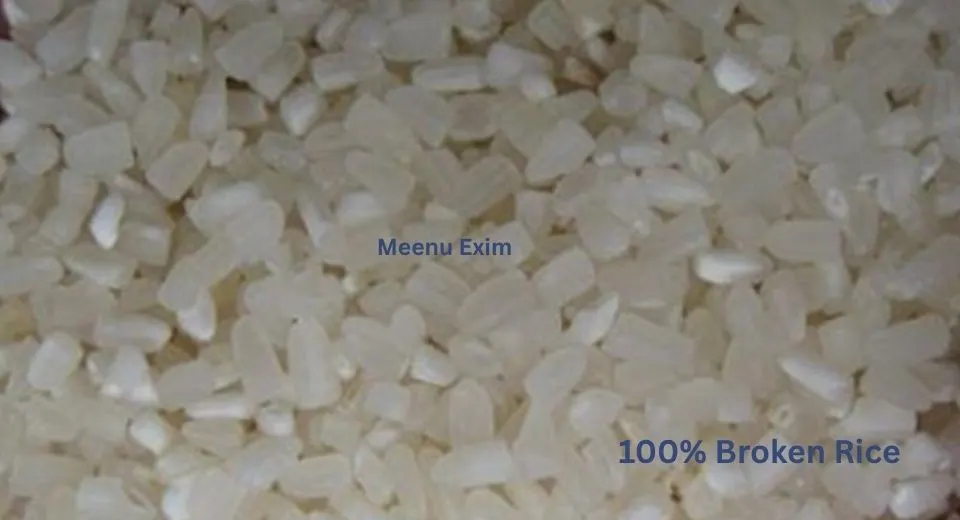
Table of Contents
Toggle100 % Broken Rice

100% Broken Rice refers to rice grains which are fragmented into pieces during the milling process. This grade of rice consists entirely of broken kernels, as opposed to whole grains. These fragments can occur due to various factors, including field damage, drying, mechanical milling etc.
Key characteristics :
- Grain Size: The grain length of 100% broken rice is significantly shorter than whole grain rice. It generally ranges from 1mm to 3mm on average.
- Moisture Content: Generally, the maximum moisture content in this rice is around 14%,
- Color: Most commonly, it is white in color.
- Purity: While it’s 100% broken, it still adheres to purity standards regarding foreign matter, damaged grains, and discolored grains. These things are kept at minimal levels (e.g., 0.25% to 5% max for foreign matter, 1% max for damaged kernels).
- Milling Degree: It is usually well-milled.
- Variety: It can be derived from various rice types, including Basmati or Non-Basmati varieties like IR 64, Sona Masoori.
Uses and Applications:
Due to its fragmented nature and economical pricing, 100% broken rice finds a variety of uses This include:
- Human Consumption:
- Economical Staple: Due to low price It is a preferred and affordable staple in many developing and third-world countries.
- Quick Cooking: Its smaller size allows it to cook faster than whole grain rice .This makes it a viable option.
- Porridges and Congees: It’s ideal for making dishes like rice pudding (kheer) congee (rice porridge), and idli/dosa batter, where its ability to absorb liquids and create a creamy, thick texture is valued.
- Rice Flour: It is a primary ingredient for making rice flour.
- Animal Feed:
- It is widely used as animal feed for livestock, poultry (bird food), and even pet food (dog feed) due to its nutritional value high and high starch content.
- It’s also used as aquaculture diets for various types of fishes .
- Industrial Uses:
- Brewing: It is also Known as “brewers’ rice, i.e. it is traditionally used in the beer-making process.
- Starch Production: It is utilized for producing starch, which has applications in food, cosmetics, and textile manufacturing.
- Chemical Production: It Can be used in the production of chemicals like hexane-hexol or fructose.
- Human Consumption: